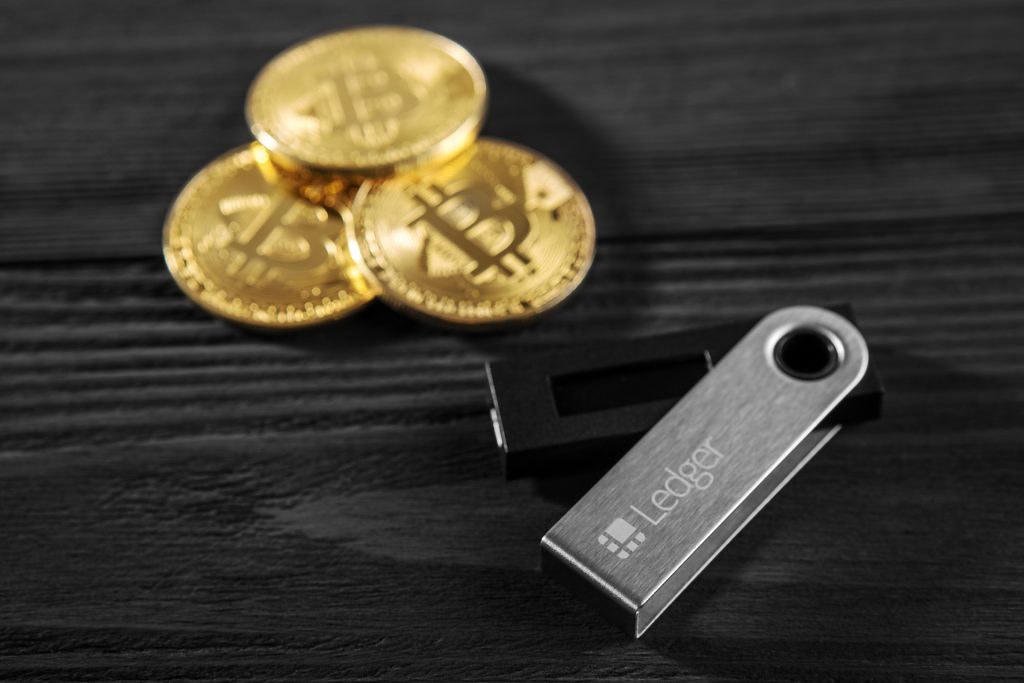Ultimate Guide to Safely Using a Hardware Wallet for Crypto Assets

Securely storing crypto assets is paramount to protecting your valuable digital assets from online threats. Hardware wallets offer an excellent solution by keeping your private keys offline and out of reach from potential hackers and malware. However, following specific guidelines and best practices when using a hardware wallet is essential to ensure the utmost security. In this comprehensive guide, we’ll cover everything you need to know about hardware wallets and provide ten crucial tips to maximize your crypto security.
Introduction to Hardware Wallets
What is a Hardware Wallet?
Learn about the concept of hardware wallets, their purpose, and how they differ from software wallets:
A hardware wallet is a physical item created solely for offline storage of cryptocurrency private keys. Moreover, private keys are used to sign transactions, which means having access to one’s private keys is the same as having access to one’s crypto assets.
Therefore, Hardware wallets, also called cold wallets, protect private keys from digital threats, such as malware or hackers, by ensuring that the keys never leave the device when used to sign transactions internally. This makes them one of the more secure methods for storing cryptocurrency.
In contrast, software wallets, or hot wallets, are online applications installed on devices like computers or smartphones, offering greater accessibility but being more vulnerable to internet-based attacks.
How Does a Hardware Wallet Work?
Understand the process of using a hardware wallet for transactions and how private keys are securely managed within the device:
Hardware wallets must be used in conjunction with an online device because they are constantly offline. Hardware wallets are typically built to be able to plug into PCs or smartphones without leaking the private key — even machines that have been infected by malware. In addition, from there, they interact with software allowing users to view their balance and make transactions.
Users submit transactions to the hardware wallet (1 in the figure below) when they have been created. The transaction must still be signed by the device’s private key, so take note of this. When the hardware device asks, users affirm that the amount and address are accurate. After being signed, the transaction is returned to the program, which broadcasts it to the Bitcoin network.
Getting Started with a Hardware Wallet
Purchase a Reputable Hardware Wallet
Discover the importance of buying hardware wallets from trustworthy sources to avoid potential tampering.
Initializing the Wallet
Learn how to set up your hardware wallet and connect it to your computer or smartphone.
Creating a New Wallet
Generate a new set of private keys during setup to ensure a secure starting point for your crypto journey.
Essential Security Tips for Hardware Wallets
Backing Up Your Recovery Phrase
Master the process of creating and securely storing your recovery phrase for future wallet recovery.
Setting a Strong PIN
For further security against illegal access, set a strong PIN for your hardware wallet.
Making Transactions with a Hardware Wallet
Receiving cryptocurrency
Find your address
Use the wallet’s app or software to find your public address for the cryptocurrency you want to receive.
Share your address
Provide this address to the person or exchange sending you cryptocurrency. They will send the cryptocurrency to this address.
Sending cryptocurrency
Create a transaction
Use the wallet’s app or software to create a new transaction. Input the recipient’s address and the amount of cryptocurrency you want to send.
Sign the transaction
The hardware wallet will sign the transaction with your private keys. This is done within the device, so the keys never leave the wallet.
Broadcast the transaction
The wallet’s software will announce the transaction to the rest of the network once you have signed it.
Understanding the Difference Between a Private Key and a Recovery Phrase
Private Key Explained
A private key enables the spending of Bitcoin or other cryptocurrencies and is a secret number, typically in a hexadecimal format. It’s a critical part of the cryptography systems behind cryptocurrencies. The wallet owner uses it to sign transactions, proving their provenance mathematically.
Recovery phrase Explained
A recovery phrase, seed phrase, or backup phrase is a list of words that store all the information needed to recover a cryptocurrency wallet. This phrase represents the private key(s) in a human-readable format.
It’s used as a backup to restore access to your cryptocurrencies if you lose access to your wallet, lose your device or forget your PIN or password.
In summary, the private key is the raw, non-human-friendly format that’s used internally within the wallet and for signing transactions, while the recovery phrase is a human-friendly format that’s used for backup and recovery. The recovery phrase is usually easier to write down and store securely than a raw private key.
Maximizing Hardware Wallet Security – Ten Tips
Buy from Trusted Sources
Ensure the authenticity of your hardware wallet by purchasing directly from reputable manufacturers or retailers.
Keep Firmware Up-to-Date
Regularly update your hardware wallet’s firmware to benefit from the latest security improvements.
Safeguard Your Recovery Phrase
Never share your recovery phrase with anyone, and store it securely offline.
Use a Strong PIN
Create a strong PIN for your device to prevent unauthorized access.
Double-Check Addresses
Always verify the recipient’s address before sending cryptocurrencies to avoid falling victim to malware attacks.
Verify Transactions on the Device
Confirm transaction details directly on your hardware wallet’s screen for an added layer of security.
Store Your Wallet Securely
Treat your hardware wallet as you would precious jewelry or cash, keeping it in a secure location when not in use.
Consider Using a Passphrase
Explore the option of adding a passphrase for extra protection, but use it with caution as forgetting it can lead to permanent loss of funds.
Use Trusted Computers
Connect your hardware wallet only to trusted computers with good security measures.
Benefits and Risks of Hardware Wallets
Advantages of Hardware Wallets
Explore the benefits of using hardware wallets, including enhanced security, private key isolation, and complete control over your crypto assets.
Risks of Hardware Wallets
Understand the potential risks associated with hardware wallets, such as physical theft, supply chain attacks, phishing, and device damage.
Conclusion
However, acknowledge that the ultimate responsibility for cryptocurrency security lies with the user, and adopt the best practices outlined in this guide to mitigate risks effectively. Furthermore, according to the instructions in this thorough tutorial, you may securely utilize a hardware wallet to secure your crypto assets and shield your investments from any risks. Stay informed, and implementing the recommended security measures are key to safeguarding your digital wealth.








